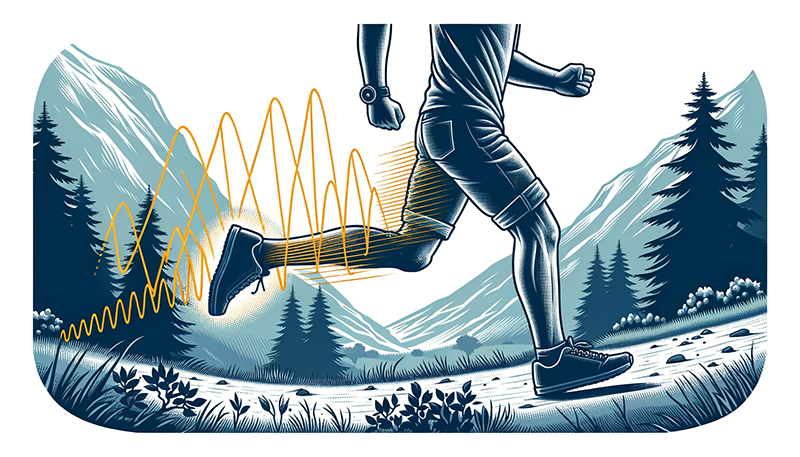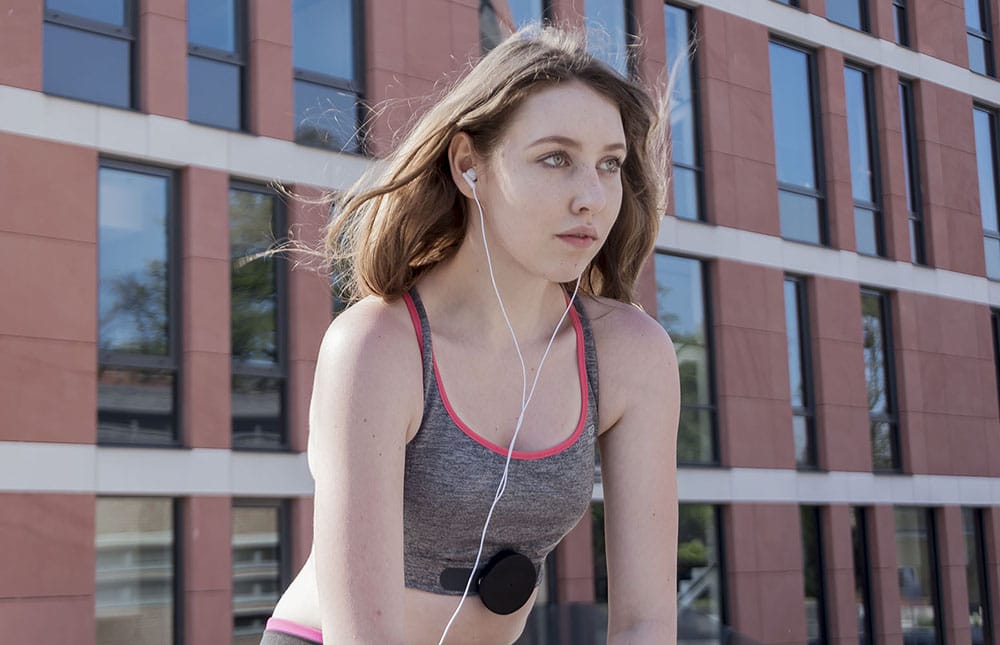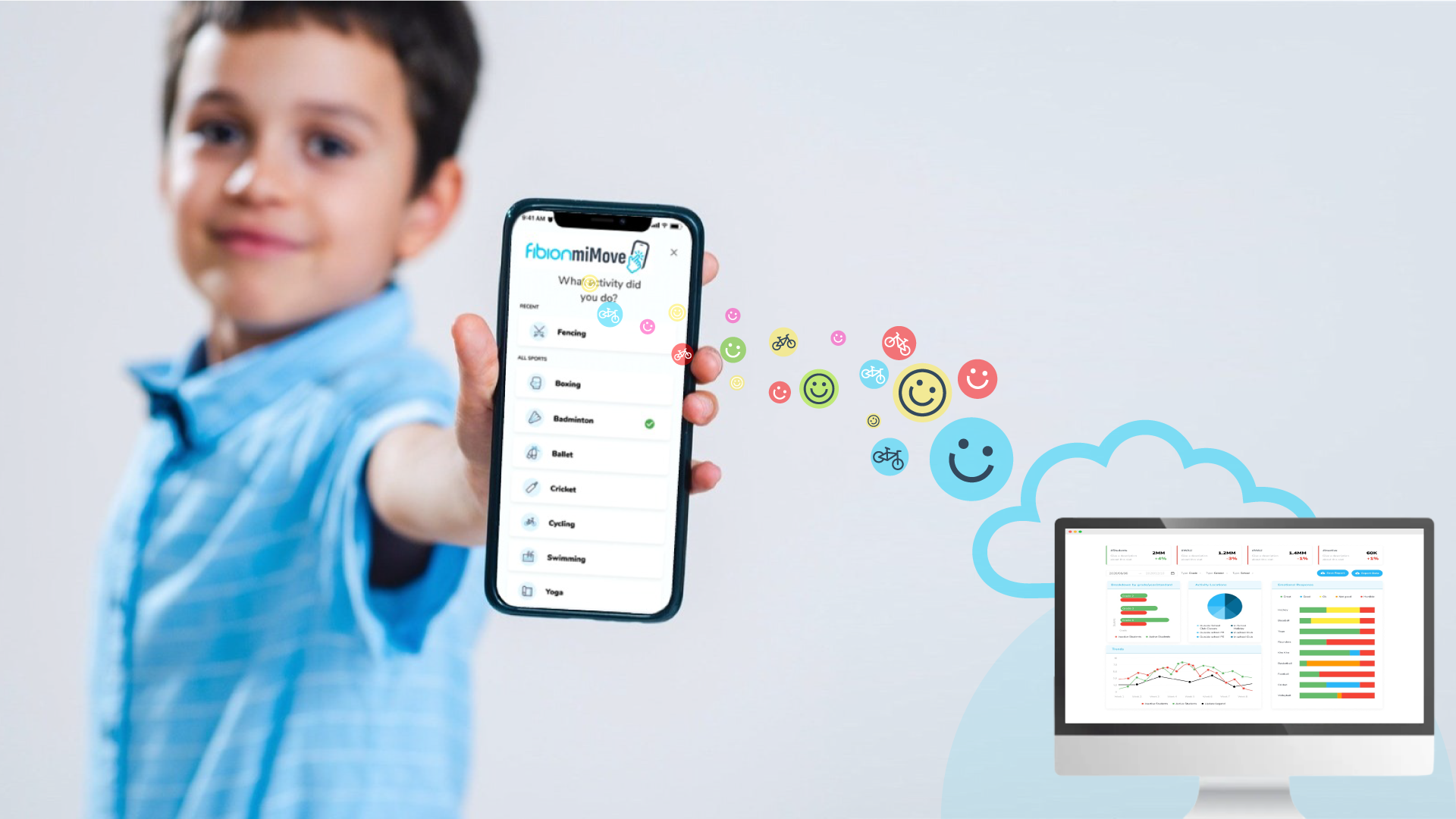Introduction
Physical activity and sedentary behavior are two sides of the same coin. While physical activity involves any bodily movement that requires energy expenditure, such as walking, jogging, or cycling, sedentary behavior refers to activities that involve little to no physical movement, like sitting, watching TV, or working at a desk. Physical inactivity is a significant public health issue, as it has been linked to numerous chronic diseases, obesity, and even early mortality. On the other hand, regular physical activity promotes overall health and well-being, reducing the risk of these negative outcomes.
In today’s fast-paced world, where an increasing number of people are engaged in sedentary occupations and lifestyles, understanding and measuring these behaviors is crucial for researchers and clinicians alike. Accurate measurement of physical activity and sedentary behavior is vital for various purposes, including evaluating the efficacy of interventions, assessing the primary outcome of studies, and providing personalized recommendations for individuals.
The aim of this article is to present an overview of the common methods and tools for measuring sedentary behavior and physical activity. By doing so, we hope to equip researchers and clinicians with the knowledge necessary to make informed decisions when selecting appropriate measurement tools for their specific needs.
Measurement tools and methods have evolved significantly in recent years, thanks to advancements in technology. From self-report questionnaires and direct observation to wearable devices and emerging technologies, researchers and clinicians now have a wide array of options to choose from. Wearable devices, such as accelerometers, pedometers, and heart rate monitors, offer more objective and detailed data compared to traditional self-report methods. In addition, virtual training and coaching platforms have emerged as promising tools to promote regular physical activity and minimize sedentary behavior.
Throughout this article, we will discuss various methods and tools in detail, providing insights into their advantages, limitations, and best use cases. Furthermore, we will highlight the importance of considering factors such as research question, study population, budget, and setting when selecting the appropriate measurement method or tool.

In the article on sedentary behavior and physical activity measurements, you will find an overview of the different types of measurements and their applications. For a more in-depth discussion of accelerometers, visit our accelerometer article.
We also have articles addressing special populations, older adults, and children and adolescents, as well as articles focusing on measurements in clinical settings and occupational activity.
By the end of this article, we hope to have provided a comprehensive understanding of the various methods and tools available for measuring sedentary behavior and physical activity, empowering researchers and clinicians to make informed decisions in their work. Ultimately, our goal is to contribute to the promotion of healthier, more active lifestyles for individuals across the globe.
Sedentary Behavior
Defining Sedentary Behavior
Sedentary behavior refers to activities that involve little to no physical movement and require low energy expenditure, typically resulting in a sitting or reclining posture. These behaviors are characterized by an energy expenditure of 1.0-1.5 metabolic equivalents (METs) and can include activities such as watching television, working at a desk, reading, or using a computer. It is important to note that sedentary behavior is distinct from physical inactivity, as one can be physically active but still engage in substantial sedentary time.
Measuring Sedentary Behavior
Self-report Questionnaires
Questionnaires are a common method for measuring sedentary behavior and are relatively easy to administer. They typically involve participants self-reporting their daily or weekly sedentary time, as well as the type of activities they engage in. Some common questionnaires used in research include the International Physical Activity Questionnaire (IPAQ) and the Sedentary Behavior Questionnaire (SBQ).
Advantages of self-report questionnaires include their low cost, ease of administration, and suitability for large-scale studies. However, limitations include potential recall bias and social desirability bias, as participants may unintentionally or intentionally over- or under-report their sedentary time. Additionally, questionnaires may not always accurately capture the full range of sedentary activities or differentiate between them.
Wearable Devices
Wearable devices have become increasingly popular for measuring sedentary behavior, offering a more objective and detailed assessment compared to self-report methods. These devices typically utilize accelerometers and inclinometers to measure physical activity and sedentary time. Example devices include the ActiGraph, activPAL, and Fitbit.
Accelerometers measure acceleration and movement, while inclinometers detect changes in body position, such as sitting or standing. These devices can provide valuable information about the duration, frequency, and intensity of sedentary behavior. However, they can be more expensive than questionnaires and may cause discomfort or inconvenience for some users.
Direct Observation
Direct observation involves a researcher or trained observer visually monitoring and recording an individual’s sedentary behavior. This method can provide detailed information about the context and type of sedentary activities, as well as the duration and frequency.
Advantages of direct observation include its ability to capture context and the researcher’s control over the data collection process. However, this method can be time-consuming and resource-intensive, making it less suitable for large-scale studies. Observer bias is another limitation, as the presence of an observer may influence participants’ behavior, and the observer’s interpretation may introduce subjectivity.
In conclusion, measuring sedentary behavior is crucial for understanding its impact on health and developing effective interventions. A variety of methods and tools are available, each with its own advantages and limitations. Researchers and clinicians must consider their specific needs, study population, and resources when selecting the most appropriate method for measuring sedentary behavior. For a more comprehensive overview of various methods and tools for sedentary behavior and physical activity measurement, visit our article on this topic.
Physical Activity
Defining Physical Activity
Physical activity is any bodily movement that requires energy expenditure, ranging from low-intensity activities such as stretching and leisurely walking to high-intensity activities like running and weightlifting. Physical activities can be categorized into different domains, including occupational, household, transportation, and recreational or leisure-time activities.
Measuring Physical Activity
Self-report Questionnaires
Self-report questionnaires are commonly used to measure physical activity and sedentary behavior in research settings. They involve participants providing information about their activity levels, frequency, and intensity. Common questionnaires include the Global Physical Activity Questionnaire (GPAQ) and the International Physical Activity Questionnaire (IPAQ).
Advantages of self-report measures include their low cost, ease of administration, and suitability for large-scale studies. However, they have limitations, such as potential recall bias, social desirability bias, and inaccuracies in estimating the intensity and duration of activities.

Wearable Devices
Wearable devices are increasingly used to measure physical activity, offering a more objective assessment compared to self-report methods. These devices often employ accelerometers, pedometers, and heart rate monitors to track activity levels. Example devices include the ActiGraph, Fitbit, and Polar.
Accelerometers measure acceleration and movement, pedometers count steps, and heart rate monitors track cardiovascular activity. These devices provide valuable insights into the frequency, intensity, and duration of physical activity. However, they can be more expensive than questionnaires and may be inconvenient for some users.

Direct Observation
Direct observation involves a researcher or trained observer visually monitoring and recording an individual’s physical activity. This method can provide detailed information about the context, type, and intensity of activities, as well as their frequency and duration.
Advantages of direct observation include capturing contextual information and the researcher’s control over data collection. However, it can be time-consuming, resource-intensive, and prone to observer bias, making it less suitable for large-scale studies.
Advanced Methods for Assessing Physical Activity
Advanced methods for assessing physical activity provide more accurate measurements but often require specialized equipment and trained personnel. Examples include doubly labeled water and indirect calorimetry.
Doubly labeled water is a gold standard for measuring total energy expenditure, which can be used to estimate physical activity levels. This method involves participants consuming water enriched with stable isotopes, and researchers later analyze urine samples to determine energy expenditure. While highly accurate, this method is expensive, time-consuming, and not suitable for all populations.
Indirect calorimetry measures the amount of oxygen consumed and carbon dioxide produced during rest and exercise to estimate energy expenditure. This method can be used to assess physical activity levels and is often employed in laboratory settings. While indirect calorimetry provides accurate measurements, it requires specialized equipment and can be expensive and time-consuming.
In conclusion, accurate measurement of physical activity is crucial for understanding its impact on health and developing effective interventions. A variety of methods and tools are available, each with its own advantages and limitations. Researchers and clinicians must consider their specific needs, study population, and resources when selecting the most appropriate method for measuring physical activity. For a comprehensive overview of various methods and tools for physical activity and sedentary behavior measurement, visit our article on this topic.
Comparison of Methods and Tools
In the assessment of physical activity and sedentary behavior, various methods and tools are available for researchers and clinicians. Each method has its own advantages and limitations, making it essential to choose the right approach for the specific research or clinical setting. This article compares the main methods, including physical activity questionnaires, activity monitors, and direct observation, to help you make an informed decision.
Physical Activity Questionnaires
Physical activity questionnaires are self-report measures that involve participants providing information about their activity levels, frequency, and intensity. Common questionnaires include the Global Physical Activity Questionnaire (GPAQ) and the International Physical Activity Questionnaire (IPAQ).

For more information about physical activity questionnaires, refer to our article on methods and tools for sedentary behavior and activity measurement.
Activity Monitors
Activity monitors, such as wearable devices, offer a more objective assessment of physical activity compared to self-report methods. These devices often employ accelerometers, pedometers, and heart rate monitors to track activity levels. Example devices include ActiGraph, Fitbit, Fibion, and Polar.


Learn more about activity monitors and their use in measuring physical activity and sedentary behavior in our accelerometer article.
Direct Observation
Direct observation involves a researcher or trained observer visually monitoring and recording an individual’s physical activity. This method can provide detailed information about the context, type, and intensity of activities, as well as their frequency and duration.

For more details about direct observation, visit our article on choosing the right measurement method for research and clinical settings.
Making the Right Choice
When selecting a method for measuring physical activity and sedentary behavior, consider the following factors:
- Study objectives: Identify the main goals and outcomes of your research or clinical setting, and choose a method that aligns with these objectives.
- Population: Consider the specific population you are working with, such as older adults, children, or individuals with special needs. Tailor your choice of method to suit the unique characteristics of this population.
- Resources: Evaluate the available resources, such as budget, time, and personnel. Select a method that fits within these constraints.
- Accuracy: Determine the level of accuracy required for your research or clinical setting. Balance the need for precision with the practical limitations of each method.
In conclusion, choosing the right method to assess physical activity and sedentary behavior is crucial for obtaining accurate and meaningful data. By considering the specific needs of your research or clinical setting, and weighing the advantages and limitations of each method, you can make an informed decision that will contribute to the success of your study or intervention. To learn more about the various methods and tools available, refer to our in-depth resources on the topics of sedentary behavior and physical activity measurements and emerging technologies for activity and sedentary measurement. These articles will provide you with valuable information on the latest advancements, techniques, and considerations in assessing physical activity and sedentary behavior, ensuring you make well-informed decisions in your research or clinical practice.
Choosing the Right Method and Tool for measuring physical activity and sedentary behavior
Selecting the appropriate method and tool to assess sedentary and physical activity behaviors is crucial for obtaining accurate and meaningful data. In this section, we discuss the factors to consider when choosing the right method, the importance of using multiple methods for validation, and provide recommendations for researchers and clinicians.
Factors to Consider
When selecting a method to assess sedentary behaviors and physical activity level, consider the following factors:
- Research question: Your research question should guide your choice of measurement method. Consider the specific outcomes you want to explore and select a method that aligns with these objectives.
- Population: Tailor your choice of method to the unique characteristics of your target population, such as age, health status, or cultural background.
- Budget: Evaluate the available financial resources and choose a method that fits within your budget constraints.
- Setting: Consider the environment in which the study or intervention will take place, and choose a method that suits the specific context.

Importance of Using Multiple Methods
Using a combination of methods to measure physical activity and sedentary behavior can enhance the validity and reliability of your findings. For example, combining self-report measures with objective tools like wearable devices can help to counteract the limitations of each method, providing a more comprehensive and accurate picture of participants’ activity levels.

For more information on the different methods and tools, refer to our article on methods and tools for sedentary behavior and activity measurement.
Recommendations for Researchers and Clinicians
Based on the factors discussed above, here are some recommendations for choosing the right method to assess physical activity and sedentary behavior:
- Research: For large-scale studies, self-report measures like questionnaires may be the most cost-effective and feasible option. However, consider supplementing these with objective measures, such as wearable devices, to improve accuracy.
- Clinical: In clinical settings, a combination of self-report measures and wearable devices may provide valuable insights into patients’ activity levels and adherence to prescribed interventions.
- Special populations: For populations with specific needs, such as older adults, children, or individuals with disabilities, consider using tailored assessment tools or adapting existing methods to suit their unique requirements.

Ultimately, the most effective approach to assessing physical activity and sedentary behavior will depend on the specific context of your research or clinical setting. By carefully considering the factors outlined above and incorporating multiple methods when appropriate, you can ensure that you select the best measurement approach for your study or intervention. To learn more about the various methods and tools available, refer to our comprehensive article on choosing the right measurement method for research and clinical settings.
Conclusion
Throughout this guide, we have explored various methods and tools for measuring sedentary behavior and physical activity, including self-report questionnaires, wearable devices, direct observation, and advanced assessment techniques. Understanding the differences and potential applications of these approaches is essential for researchers and clinicians looking to accurately measure activity patterns and assessing sedentary behaviour.
In the realm of self-report measures, we discussed the advantages and limitations of questionnaires, such as the International Physical Activity Questionnaire (IPAQ) and the Global Physical Activity Questionnaire (GPAQ). These tools can offer valuable insights into an individual’s perception of their own activity levels, but they may be subject to recall and response bias.
We also examined wearable devices, including accelerometers, pedometers, and heart rate monitors. These devices can provide objective, real-time data on various aspects of physical activity, from steps taken to light-intensity physical activity. However, they may not capture the full spectrum of an individual’s activity patterns or account for certain types of movements.
Direct observation, as an alternative approach, can provide a more comprehensive view of an individual’s activity and sedentary behaviors. Yet, this method can be labor-intensive and potentially subject to observer bias. Advanced techniques, such as doubly labeled water and indirect calorimetry, can offer highly accurate measurements but may be cost-prohibitive or require specialized equipment and expertise.
Ultimately, the choice of method and tool for measuring sedentary behavior and physical activity will depend on your research question, population, budget, and setting. In many cases, using multiple methods for validation can help to ensure the most accurate and reliable data. Furthermore, keeping up-to-date with emerging technologies and measurement tools is crucial for staying ahead in the field.
As researchers and clinicians work to understand the impact of sedentary behavior and physical activity on health, it is important to adhere to physical activity guidelines and promote a healthy balance of activity and rest. By selecting the appropriate methods and tools for your research or clinical practice, you can contribute to a greater understanding of the complex relationship between sedentary behavior, physical activity, and overall health.
We encourage you to visit our website and explore the range of measurement technologies we offer to support your work in assessing sedentary behavior and physical activity. Our resources, such as emerging technologies for activity and sedentary measurement and choosing the right measurement method for research and clinical practice, provide valuable insights into the latest advancements and tools in the field. We look forward to supporting your research and clinical endeavors as you strive to improve the understanding of sedentary behavior and physical activity and their impact on health.











